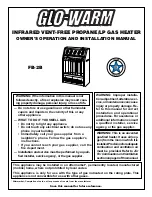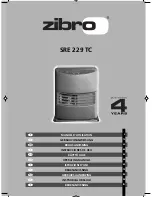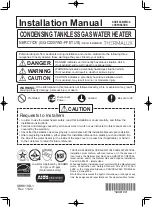
RESIDENTIAL GAS AND ELECTRIC WATER HEATER
SERVICE HANDBOOK
A.O. Smith Water Products Company
Training Department
©
2002
Ashland City, Tennessee
49
TECHNICAL BULLETIN
BULLETIN 11
WATER HAMMER
GENERAL
Water hammer is the destructive forces, pounding noises and vibration in a piping
system when water flowing through a pipeline is stopped abruptly. When water
hammer occurs, a high intensity pressure wave travels back through the piping
system until it reaches a point of some relief. The shock wave will then surge back
and forth between the point of relief and the point of stoppage until the destructive
energy is dissipated in the piping system. The violent action accounts for “banging”,
“thumping”, and/or intense vibration in the pipe line. Although noise is generally
associated with the occurrence of water hammer, it can occur without audible sound
or noise. Quick closure always causes some degree of shock with or without noise.
The common cause of water hammer is single lever faucets (sinks/lavatories) or
automatic solenoid valves (dishwashers, washing machines, etc.). The speed of the
valve closure time is directly related to the intensity of the surge pressure.
EFFECTS
The damage from water hammer can manifest itself in a number of ways. The most
common are:
•
Expanded Tank Shell
- This can be demonstrated by measuring the circumference at
various locations along the shell. Pressures in excess of the maximum design working
pressure can cause permanent deformation of the shell
.
•
Collapsed Flue Tube
- This will choke off the ability to vent the products of combustion
causing the flame and/or combustion to spill out from the combustion chamber. Often
this will occur where thinning of the flue tube walls has occurred due to contamination
of the combustion air or because of excessive condensation
.
•
Inverted or Deformed Tank Heads
- Often this accompanies collapsed flues, but one
or both heads can be deformed.
THE FIX
The only effective means of control is to install water hammer arrestors. These
devices have diaphragms, which separate an air chamber from the water in the piping
system. As the shock wave reaches this device, the air chamber absorbs the shock.
Arrestors should be located as close as possible to the source of the shock wave.
NOTES
Since water hammer exposes the equipment to pressures in excess of its design
limits, failures caused by water hammer are not eligible for warranty consideration.












































